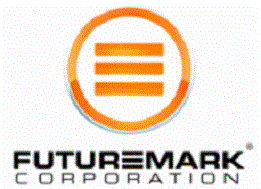Introduction
Thermochill is a company with an interesting marketing strategy. A rather simple and effective stratagem entitled Offer an alternative to all. Thermochill has built a reputation by making solid products and it is that goodwill that they thrive upon. The list of Thermochill products are growing increasingly larger, with radiators, compression barbs and now coolant amongst its portfolio. Through this approach they could have a chance at alienating their existing customer base by producing (according to some of the hard core water cooler enthusiasts) a product based on marketing hype. However in all fairness time will tell whether this is a good idea or not.
A simple Google search will reveal the ugly truth behind some of the pre-mixed fluid used today. Primochill and Feser have experienced occasional issues, such as the dyes breaking down at higher temperatures, floating scale issues and other problems.  To be fair, these incidents are of an isolated nature.  But the issues are not helped by the CEO of a certain company denying that the problem (though isolated) even exists and insisting that well respected people are faking photographs and are out to ruin him. This indeed does not help matters and as such this reviewer and many other enthusiasts have fallen back to the old distilled water and PT-Nuke method.  As a review site, we are supposed to be impartial, but after the folly of other companies we cannot help but observe with a slightly sceptic eye.
Specifications
What follows is a list of specifications as read from the product label.
Electrical Conductivity < 2µS/cm at 24C
– Freezing Point – 6C
– Corrosion Inhibitors Proven to ASTM D3306 and BS6580
– Non-Toxic and RoHS Compliant
– 85% Bio-degradable Within 30 Days
– Stable UV Reactive Dyes
– 2 Year Shelf-life
Thermochill EC6 is a high performance eco-friendly coolant for PC water-cooling based upon a blend of vegetable extracts, with non toxic corrosion inhibitors and non toxic UV dyes. It offers superb protection for copper, brass,steel, nickel and aluminium.
EC6 has a high thermal conductivity, is electrically non-conductive and with its range of intense bright UV colours, it’s the perfect coolant for PC water-cooling.
The Thermochill EC6 arrives in three colours; UV Green, Blue and the high performance (NON UV) clear. A third UV red colour is planned for a future release.
| Thermochill UV Green | UV Blue |
 |
 |
| Clear (Performance) |
 |
Extreme Testing
Testing equipment was consistent throughout the review with comparisions against De-ionised water with PT-Nuke added. Other coolant used for testing were the fairly well known Fluid XP Extreme (clear) and the popular Primochill ‘Pure’ coolant. This is in order to create a direct comparision against the Thermochill EC6 Coolant.
The radiatior used was the rather excellent Black-Ice SR1 120MM model which was in order to generate as much heat as possible to try and push the capabilities of all the fluid types.
Before that though, first up is the extreme testing.
Methodology
We have all heard the nightmares of various popular makers of coolant and their dyes breaking up under various water-cooling loops. They are rare but they are well publicised and documented. Some manufacturers have simply recalled ‘faulty’ batches whilst others have simply deafened their ears to the concerns of their customers.  Overclockers Tech will not go out to name and shame the aforementioned company. The manufacturer and their customer service are already well known. After all, the public also knows that the same company mentioned that their radiators were made in Europe, when in reality they were manufacturered in China and simply painted in Europe.
Moving onto the issue at hand, Overclockers Tech has posted images in the past of a ‘gunge’ build up in a water cooling loop caused by a well known coolant and flakes of dye in another. It is the theory of this reviewer that the coolant cannot simply cope with temperatures of around 75c (CPU temperature NOT fluid) and above in a mixed-metal enviroment. This causes the dyes to seperate and either ‘clump’ together or thicken the fluid. In order to test for such things, this is what we did:
- Pour the Blue Thermochill EC6 coolant into a cooking pan and boil at 96c for a period of 90 minutes.
- Observe for any seperation or clumping together of UV Dyes
- Insert a mixture of metals into the boiling coolant which includes Zinc, Brass, Copper and aluminium
- In addition drop some acrylic into the fluid to check for staining.
- Boil again for another 90 minutes
- Turn off the heat and with tongs extract the metal and wash and observe the results
- Observe the coolant to check again for thickening and or seperation of dyes.
- Let the fluid cool naturally and then drop the bottle of coolant into the freezer for three hours
- After three hours observe and repeat the steps lined out above.
Of course in real-life a water cooling loop would never even approach anything of this temperature, this is just an extreme method of testing to check for seperation of UV dyes.
The following are a series of images showing the results and steps of this extreme method of testing.
Click to Enlarge
| Pour Into a Pan |
 |
| Boil for 90 minutes | Temperature Readout |
 |
 |
It is to be noted that the evaperation point of the Thermochill EC6 coolant is roughly the same as that of normal water, so in this test the whole bottle was used.
To test to see if there were any issues with regard to the coolant ‘clumping’ together when used with a mixture of metals and in addition to high temperatures, a mixture of metals were placed into the boiling fluid. This included Zinc, Copper, Brass and since there were no aluminium blocks available, a small wad of aluminium foil was used.
| Metals Placed Within Coolant | After another 90 Minutes |
 |
 |
As clearly demonstrated the dyes in the fluid have not seperated or ‘clumped’ together into a ‘gunge’ like substance. It is also noteworthy that the acrylic top on the dangerden block has not been stained. Lastly the Thermochill FLuid was left to cool naturally and then was placed in the freezer at minus 3c for three hours, then the whole boiling process was started again. Note: that the fluid can indeed withstand freezing temperatures as the fluid once again performed as expected and did not freeze into a single block.
| Thermochill in the Freezer |
 |
Testing under an Ultravoilet Light
Testing for florescence was undergone by using a standard twelve inch cold-cathode UV light. It is to be noted that most people test these by simply pouring the fluid into a regular glass. However regular glass absorbs most of the UV light rather than letting it through to fluoresce the coolant! The best method to use is either a crystal or a quartz based glass. As demonstrated in the following images; a crystal ‘pudding’ dish was used in order to better demonstrate the ‘UV effect’
| Thermochilll Green Side View | Green Coolant from above |
 |
 |
| UV Light Side View | UV Light view from Above |
 |
 |
| Thermochill Blue Side View | Blue Coolant from Above |
 |
 |
| UV Light Side View | UV Light View from Above |
 |
 |
If one wished to compare the luminosity of the Thermochill EC6 fluid under a UV light, one could say that it is of magnitude to that of the Primochill UV Green (Green for Green comparision) However it is not as a bright as Feser’s green coolant. All in all if one wished to use this fluid for a bling effect then Thermochill EC6 could be in as a possible condender.
A rigerous regime was used in the performance testing of Thermochill fluid. However for performance purposes the main coolant was used in the Thermochill Range was Clear fluid. To compare in a like for like situation Fluidxp+ Ultra, Primochill Clear (performance) and De-ionised water (no anti algea) was used to give a direct comparision.
Equipment Used to Test
A range of equipement was used to test in order to give an accurate picture of the EC6 coolant’s performance. In addition, so the more suspicious readers do not cry ‘foul’ a Blackice SR1 120MM radiator was used. At this time one would like to mention that the Black Ice SR1 range (by hardware labs) is a very good alternative to Thermochill or XSPC. These radiators are BUILT for low-air flow and they do perform rather well.
A temperature controlled enviroment was used with the ambient being 22.7 Degrees-C. Two sensors were placed before and after the radiator. The former being placed just before the fan (blowing air through the radiator) and a second placed just after in order to monitor temperature changes there. Next two in-line sensors were placed within the loop; the first being placed just before the CPU water block in order to monitor fluid in temperatures, The latter to monitor the heat of the fluid coming our of the water block and into radiator.  Finally the CPU temperature was measured by using everyones favourite program, Realtemp 3.0!  All CPU readings are given by taking the temperature from the HOTTEST CORE only!
- Mountain Mods Ascension case (most of the water cooling loop was placed outside of the case)
- DFI X58 T3EH8 UT
- 3X1 GIGABYTE of Corsair DDR3 1866 RAM 9-9-9-24 1.65 and 1.42 VTT
- CORE I7 920 (D0Stepping)
- Water Cool Heatkiller 3.0 (Copper) water block with backing plate.
- Liang DDC Ultra Pump
- EK-X-res 100mm
- ClearFLex 1/2″ ID Tubing
- Hardware Labs SR1 120MM radiator
- Single Noctua NF-P12 Fan
- Lian-Li temperature Monitor (for before and after radiator air temperatures)
- Tagan BZ Piperock 800w PSU for motherboard/CPU/HDD and fans
- Gigabyte Odin 1200w for PUMP and LED readouts for the sensors
Note that the radiator and pump/res were placed OUTSIDE of the chassis, in order to achieve a more accurate reading. It is to be noted that ALL idle temperatures were taken after one hour of 100 percent CPU load by using Prime 95 and then left to cool down for 30 minutes.
For the CPU water block a backing plate was used in order to give the EXACT same pressure; thus surface contact between the CPU and water block, in all the tests.
The following graph demonstrates the temperature of the air flowing into the radiator and the existing airflow results.
| Radiator air in/out |
 |
This Bar Chart shows the resulting differences between the water in and water out temperatures!-that is the fluid entering into the CPU water block and then exiting.
As previously mentioned a in-line sensor was place between the pump and the CPU, to monitor fluid in and another similarly placed between the CPU and radiator! This was in order to monitor the fluid out results.  This gives a much more accurate reading than just relying on the CPU temperatures alone.
| Water in/Out Temperatures |
 |
The final graph shows the CPU temperatures (measured in whole degrees) as displayed by using the old tried and tested Realtemp 3.0 program.
| CPU Temperatures |
 |
Notes On the Testing
It is this reviewers opinion that all the coolants tested did fairly well on the test rig that was used. However there is always the exception and that being the FLuid XP ultra!! At twenty pounds a bottle it was hoped that it would perform better.  However, in all fairness the viscosity of this coolant is a great deal higher than the other tested fluids. This could have a negative effect on certain CPU water blocks, such as the Heatkiller 3.0 that was used in the test procedure. This is due to the design of the block and the two sets of jets the fluid has go through.  In the future, we hope to create an addendum to this review to explore this possiblity by testing the coolants with a different type of CPU water block.
There is a slight descrepency in the Thermochill Clear and the UV green version in idle mode. This has been shown in the radiator air testing. One could only presume that the difference in background tasks in Windows 7 (even when idle) could account for this small descrepency.
Summary
The Thermochill coolant performed amazingly well-given the small range of comparision fluids available at testing. Clearly out performing (clear version) even de-ionised water and the equal of performance with it’s Ultraviolet version. It is also noted though the amazing amount of abuse the UV blue version was given, it only suffered a two degree performance loss.
To be fair the PC-Ice from Primochill also did well but was clearly out performed by the Thermochill coolant.
This reviewer had the UV green varient of THermochill coolant in one of the spare setups for a long period and when the tubes were inspected there was no sign of tube-stain. To be fair this would need to be looked at again after another four months.
Pros:
- Fairly Inexpensive compared to some coolants.
- Eco friendly coolant
- A deep UV reaction, a more solid look rather than head-ache bright
- Low Viscosity
- Doesnt stain tubes (so far tested)
- Lasts between one and two years in your system (quoted by Thermochill Rep)
- Performs exceedlingly well; compared with the products on test
- Takes alot of abuse; judging by the extreme tests undertaken
Cons:
It was fairly hard to actually find any real faults with this coolant, howeverthere is a very very minor issue.
- Need more colours.
Conclusion
The coolant industry has been long-overdue for a shake-up and it was a pleasure in testing this fluid! In all honesty, one did not expect this coolant to perform well at all, being jaded by past experience with other brands. People have often gone back to de-ionised/distilled water after expressing frustration with existing brands. It is with hopes that this could be a start of something new and based upon these findings, Overclockers Tech would have to give Thermochill their first ever gold award. We are pleased to see that Thermochill has survived the change of ownership and has continued to manufacture solid products. The same business model that has sold them in good stead in the past!
Final Award 9 out of 10
Gilgamesh






 Posted in
Posted in 

